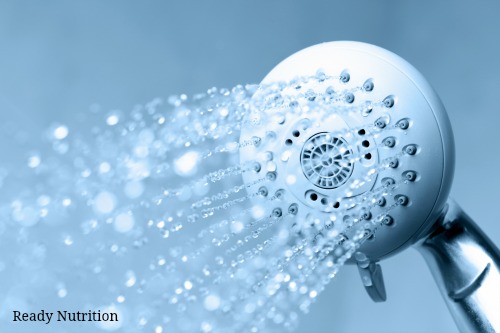
Fresh water is no longer able to be considered as a simple natural resource that is infinite in nature. Only three percent (3%) of the world’s water supply is fresh, and 2/3 of this amount is to be found tied up in glacial ice (the North and South poles). The world’s animals and plants are therefore dependent on 1% of the world’s water supply. In drought years, this can present a problem.
The average American family uses approximately 170 gallons of water per person each day.
The bathroom is responsible for ¾ of this amount: every time the toilet is flushed, 5 gallons of water is lost on average. When you stop to consider there are about 315 million people in the United States who flush that toilet about 2-3 times per day, the amount of water is staggering. To be sure, this water isn’t “destroyed,” but it is difficult to recover and render drinkable again.
Pollutants are introduced into our water supplies by industry and farming, and these pollutants seep into the groundwater to contaminate the water supplies and the crops that are raised upon them. It is estimated that 338 billion gallons per day are drawn from surface and subsurface water resources. 90 billion gallons are for people, livestock, and crops. The remainder? It goes to industry, mining, and hydroelectric/nuclear power plants.
So, what can we do? A good deal, actually. There will be differences with you, the Readers as a percentage of you use your own wells, and others use a municipal water supply. The conservation can be done by both groups, however, as conservation starts at your front door. The reasons are not so much as being part of a “green” movement as they are of preserving resources for your own family’s use. If you are responsible for your own resources, it benefits a community as a whole. Self-responsibility (not legislated responsibility) is the method for conserving your resources and supplies…this is part of preparation. There are a number of methods.
Firstly, be aware of information and resources that can help you. Contact the EPA (Environmental Protection Agency) in Washington, D.C., for information pertaining to water usage and ways to control it. Yes, they’re a government agency, however, it is your tax dollars that fund them…you may as well pick up some useful information they have garnered…that you already paid for. It is free to obtain, but you paid for it to be researched: use it!
If you decrease your time in the shower by just 1 minute per day…this will save 700 gallons of water per month. By estimating how long you shower, you can add to this water savings drastically by planning your showering time. VICTORIA AMAT CVRAM. “Victory loves Preparation,” as the saying runs. Most toilets have water-conserving features that affect the water flow. Placing a half brick or a brick in your toilet tank does not interfere with the toilet’s function, but can enable you to save anywhere from 8-20 gallons of water per person, per day. That is quite a bit of water, if you’re unable to compost your waste products.
Composting brings up another valuable point. There are plenty of composting toilets available, if it is within your ability to do effectively. Obviously if you live in a high-rise apartment building in Manhattan, you’re not going to be able to employ a composting toilet in your unit. There will be a difference if you live in a remote area and on your own property with no zoning/neighborhood requirements limiting what you can do. Research what will work for your area. Also, refer to the articles I wrote previously on rain-collection for a water supply, and different measures for establishing water points and water storage for your home and family.
There is also information on water purification methods in these articles that details how to go about making your water drinkable. I also suggest free resources such as www.howtopedia.com for downloadable, free plans on water collection points and storage methods, as well as how to obtain water from different sources. The conservation is not a mere “greening” but an exercise in supply and logistics…stretching your resources to the maximum of their conservation and employment. In this way, you are continuously preparing and honing a survival skill that will come in handy on a daily basis, and when the SHTF. JJ out!

Can you really waste water? I mean seriously, its not like it magically disappears once its down the drain. Just sayin…